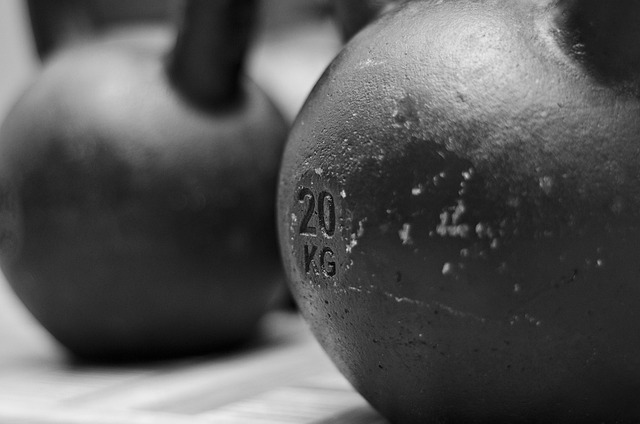When the gym is closed or when you simply prefer the comfort of your own space, the idea of maintaining a robust conditioning routine can seem daunting. Yet, the truth is that a wide variety of portable equipment can transform a small living room or basement into a fully functional conditioning hub. By combining heart‑pumping cardio with functional strength movements, portable tools let you build endurance, power, and resilience without the expense or logistical burden of a commercial facility.
Why Conditioning Matters at Home
Conditioning—defined as the ability of the body to perform sustained physical work—has become a cornerstone of modern fitness. It improves cardiovascular health, enhances metabolic efficiency, and boosts recovery. When you focus on conditioning at home, you gain control over your environment, time, and progression. Portable equipment gives you that control, allowing you to design workouts that fit your schedule, space, and goals.
For many, the term conditioning conjures images of high‑intensity interval training (HIIT) sessions, steady‑state cardio, or circuit training. All of these modalities can be executed with simple, portable gear. By keeping your conditioning regimen varied, you stimulate multiple energy systems, prevent plateaus, and keep motivation high.
Top Portable Tools for Conditioning
While an abundance of equipment is available, the most effective conditioning tools are those that combine versatility, durability, and space‑saving design. Here are the essential items that can anchor a comprehensive home conditioning program.
- Resistance Bands: Stretchable and lightweight, bands provide progressive resistance for strength and mobility drills, making them ideal for conditioning circuits that require constant movement.
- Jump Rope: One of the simplest tools for cardiovascular conditioning, a jump rope burns calories quickly, improves coordination, and can be incorporated into HIIT blocks.
- Dumbbells (or adjustable set): Adjustable dumbbells reduce clutter while offering a wide range of loads for compound exercises that elevate heart rate and build muscular endurance.
- TRX Suspension Trainer: By using body weight as resistance, TRX systems allow for dynamic, full‑body conditioning routines that target stability and power.
- Agility Ladder: Ideal for footwork drills, agility ladder patterns enhance speed, coordination, and lower‑body conditioning.
- Medicine Ball: A versatile weight that can be used for explosive throws, rotational core work, and partner conditioning drills.
- Mini‑Bikes or Step Platforms: Small, portable cardio devices that offer high‑intensity interval training with minimal floor space.
With these items, you can create conditioning sessions that mix aerobic bursts, strength bursts, and functional movements—all in the same 30‑minute block.
Designing a Balanced Conditioning Circuit
When crafting a conditioning routine, balance is key. An effective circuit should alternate between high‑intensity cardio bursts and strength or mobility work. Below is a framework you can adapt to your fitness level.
- Warm‑up (5 minutes) – light jogging in place, arm circles, hip openers.
- Cardio burst – 30 seconds of jump rope or high knees.
- Strength burst – 12 reps of goblet squats with a dumbbell.
- Core burst – 30 seconds of medicine ball Russian twists.
- Cardio burst – 30 seconds of burpees.
- Mobility burst – 15 seconds of banded lateral leg raises.
- Repeat the sequence 3–4 times, resting 30 seconds between rounds.
Notice how each component of the circuit feeds into conditioning: the cardio bursts keep heart rate elevated, the strength movements build muscular endurance, and the core and mobility elements maintain joint health and balance.
Sample Weekly Conditioning Schedule
Consistency is essential for conditioning gains. The following weekly plan offers variety while ensuring adequate recovery.
- Monday: HIIT circuit with jump rope, TRX rows, and kettlebell swings.
- Tuesday: Low‑impact cardio—stepping on a mini‑bike—followed by banded glute bridges.
- Wednesday: Rest or active recovery, such as a gentle yoga flow.
- Thursday: Agility ladder drills paired with medicine ball slams.
- Friday: Full‑body strength conditioning using adjustable dumbbells, incorporating push‑ups, lunges, and farmer’s carries.
- Saturday: Outdoor or indoor run (or a long, steady jump rope session) for steady‑state conditioning.
- Sunday: Rest or light mobility work.
Each day emphasizes conditioning, yet the movement repertoire shifts to keep the body guessing. By rotating modalities—HIIT, steady‑state, strength, agility—you promote overall conditioning without overloading any single system.
Progressing Your Conditioning Workouts
Progression is the engine of conditioning improvement. There are several ways to intensify your workouts safely.
- Increase duration or frequency: Extend each cardio burst from 30 to 45 seconds, or add an extra round to the circuit.
- Upgrade resistance: Use heavier dumbbells, thicker bands, or add a weighted vest.
- Enhance technical complexity: Add a pause at the bottom of squats, incorporate single‑leg variations, or combine two movements into a compound exercise.
- Reduce rest time: Shorten the break between rounds to challenge cardiovascular capacity.
- Introduce plyometrics: Replace body‑weight exercises with jumps or explosive throws to boost power and conditioning.
Always monitor how your body responds. Incremental changes, rather than drastic jumps, preserve injury risk and maintain long‑term adherence.
Nutrition and Recovery for Optimal Conditioning
Conditioning is not solely about exercise. Adequate fueling and recovery amplify the benefits of your training.
Key nutritional principles include:
- Protein intake: Aim for 1.2–1.6 grams per kilogram of body weight daily to support muscle repair.
- Carbohydrate timing: Consume a moderate carbohydrate source before conditioning sessions for energy, and replenish glycogen with a mix of carbs and protein afterward.
- Hydration: Maintain fluid balance, especially during high‑intensity sessions that cause significant sweat loss.
Recovery strategies—sleep, stretching, foam rolling, and active rest—play a pivotal role in sustaining conditioning gains. Prioritize at least 7–8 hours of quality sleep per night, and allow 48 hours of recovery between high‑intensity conditioning days.
Mindset and Motivation for Home Conditioning
One of the biggest hurdles to consistent conditioning is the mental barrier of “no time” or “no equipment.” Portable gear dissolves those obstacles. Here are a few mindset shifts to keep you moving.
- Define clear goals: Whether it’s running a 5K, improving VO₂ max, or mastering a new skill, a specific target fuels motivation.
- Track progress: Keep a simple log of sets, reps, or time spent conditioning. Visualizing improvement reinforces commitment.
- Incorporate variety: Switch movement patterns weekly. Variety reduces boredom and stimulates different conditioning pathways.
- Celebrate small wins: Every rep, every jump, or every incremental weight increase is progress. Acknowledge it.
When you treat conditioning as a habit rather than a chore, the transition from workout to routine becomes seamless.
Final Thoughts on Conditioning with Portable Equipment
Portability and versatility are the hallmarks of a successful home conditioning program. By selecting a curated set of tools—bands, ropes, dumbbells, and more—you create a dynamic environment that challenges the heart, muscles, and mind. Structured circuits, progressive overload, and supportive nutrition collectively elevate conditioning performance, allowing you to achieve goals that once seemed exclusive to a gym setting.
Remember that the journey to conditioning excellence is a marathon, not a sprint. Embrace the small steps, celebrate each milestone, and let the convenience of portable equipment be the catalyst that keeps you moving forward, day after day.


